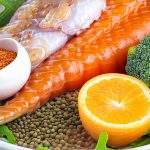Pelvic pressure, for men, is often a frustrating and uncomfortable experience that can significantly impact quality of life. It’s frequently linked to a variety of underlying causes – from prostate issues and constipation to muscle imbalances and even stress – making it crucial to approach management holistically. While medical evaluation is always the first step in diagnosing the root cause, dietary adjustments can play a surprisingly powerful role in alleviating symptoms and supporting overall pelvic health. This article will explore specific dietary considerations that men experiencing pelvic pressure may find beneficial, focusing on how food choices can influence inflammation, digestive function, and muscular support within the pelvic region. It’s important to remember this is about supportive care, not a replacement for professional medical guidance.
The sensation of pelvic pressure can range from a dull ache to sharp, localized pain, sometimes radiating to the lower back, groin, or even legs. It’s often accompanied by urinary frequency, urgency, or difficulty, and can interfere with daily activities like sitting, walking, and even sleeping. Understanding that diet isn’t a cure-all but rather a powerful tool to manage contributing factors is key. Many men don’t realize how closely connected their digestive health is to pelvic floor function, or how inflammation from dietary choices can exacerbate pain and discomfort in this sensitive area. Therefore, thoughtfully adjusting what you eat can be a proactive step towards improved wellbeing. If prostate issues are a concern, exploring options for natural pressure relief may prove helpful.
Dietary Strategies for Reducing Inflammation
Inflammation is often a silent culprit behind chronic pelvic pressure. It can irritate nerves, contribute to muscle tension, and worsen underlying conditions like prostatitis or chronic pelvic pain syndrome. A pro-inflammatory diet – high in processed foods, sugar, and unhealthy fats – can actively fuel this cycle. Conversely, an anti-inflammatory dietary approach focuses on reducing these triggers while incorporating foods known for their protective qualities.
One of the most effective steps is to significantly reduce intake of refined sugars and processed carbohydrates. These cause rapid spikes in blood glucose, leading to inflammation throughout the body. Similarly, limiting red meat consumption and opting for lean protein sources like fish (rich in omega-3 fatty acids) and poultry can make a considerable difference. Focus instead on incorporating foods naturally rich in anti-inflammatory compounds, such as turmeric, ginger, berries, leafy greens, and nuts. These aren’t just ‘health foods’; they actively work to counter the inflammatory processes that contribute to pelvic discomfort.
Furthermore, identifying food sensitivities can be incredibly helpful. Common culprits include gluten, dairy, soy, and corn. An elimination diet – removing suspected trigger foods for a period and then gradually reintroducing them while monitoring symptoms – can help pinpoint specific sensitivities that may be exacerbating pelvic pressure. It’s crucial to do this under the guidance of a healthcare professional or registered dietitian to ensure adequate nutritional intake. Dietary inflammation is rarely obvious; it’s often subtle but persistent, and addressing it requires mindful attention. Consider exploring low-fat diet options as a starting point for reducing inflammation.
Optimizing Digestive Health for Pelvic Support
The digestive system and the pelvic floor are intimately connected. Constipation, bloating, and gas can all put direct pressure on the pelvic organs, worsening symptoms. Conversely, a healthy, functioning gut promotes regular bowel movements and reduces strain on the pelvic region. This connection is often overlooked but profoundly impacts overall pelvic wellbeing.
A cornerstone of digestive health is adequate fiber intake. Aim for 25-30 grams per day from sources like fruits, vegetables, whole grains, and legumes. Fiber adds bulk to stool, facilitating regular bowel movements and preventing constipation. However, increasing fiber too quickly can actually worsen bloating, so it’s essential to increase your intake gradually while simultaneously ensuring you’re drinking plenty of water. Hydration is critical for fiber to work effectively.
Beyond fiber, incorporating probiotic-rich foods like yogurt (with live cultures), kefir, sauerkraut, and kimchi can help balance the gut microbiome – the community of bacteria residing in your digestive tract. A healthy microbiome supports optimal digestion and reduces inflammation. Avoid excessive alcohol consumption and limit caffeine intake, as both can disrupt gut health and potentially worsen pelvic symptoms. A well-functioning digestive system is a foundational element of pelvic health for men. To support overall wellbeing, check out anti-bloat foods that can help ease digestion.
Managing Prostate Health Through Diet
Prostate issues are frequently linked to pelvic pressure in men, especially as they age. While dietary changes cannot cure prostate conditions like benign prostatic hyperplasia (BPH) or prostatitis, certain foods can help manage symptoms and support overall prostate health.
- Limit dairy intake: Some studies suggest a correlation between high dairy consumption and increased risk of BPH.
- Increase tomato consumption: Lycopene, an antioxidant found abundantly in tomatoes, has been linked to reduced prostate cancer risk and may help alleviate BPH symptoms. Cooked tomatoes are more readily absorbed by the body than raw ones.
- Incorporate green tea: Green tea contains compounds that may inhibit prostate growth and reduce inflammation.
It’s important to note that research on dietary interventions for prostate health is ongoing, and individual responses can vary. However, adopting a diet rich in fruits, vegetables, and healthy fats while limiting processed foods and excessive dairy intake is generally beneficial for overall health and may positively impact prostate function. For more detailed guidance, review BPH dietary advice.
The Role of Hydration
Dehydration is often underestimated but plays a significant role in pelvic pressure. When you’re dehydrated, stool becomes harder and more difficult to pass, increasing the risk of constipation and straining the pelvic floor muscles. Conversely, adequate hydration keeps stool soft and promotes regular bowel movements, reducing pressure on the pelvic region.
Aim for at least eight glasses (64 ounces) of water per day, but individual needs may vary based on activity level and climate. Pay attention to your body’s signals – thirst is a late indicator of dehydration. Instead, aim to drink consistently throughout the day. Avoid sugary drinks and excessive caffeine, as these can have a diuretic effect, leading to further dehydration. Water is truly the best choice for optimal hydration and pelvic health.
Furthermore, consider electrolytes, especially if you are physically active or live in a hot climate. Electrolytes – sodium, potassium, magnesium – are lost through sweat and play crucial roles in maintaining fluid balance. Electrolyte imbalances can contribute to muscle cramps and discomfort, potentially exacerbating pelvic pressure. Consider hydration foods for a more holistic approach.
Mindful Eating Practices
Beyond what you eat, how you eat also matters. Rushing meals, eating while stressed, or consuming large portions can all disrupt digestion and contribute to pelvic pressure. Mindful eating involves paying attention to your body’s hunger and fullness cues, savoring each bite, and creating a relaxed environment for mealtimes.
- Eat slowly and chew thoroughly: This aids digestion and reduces bloating.
- Avoid large meals: Smaller, more frequent meals can be easier on the digestive system.
- Practice stress management techniques: Stress can significantly impact gut health and pelvic floor function. Techniques like deep breathing exercises, yoga, or meditation may prove beneficial.
Mindful eating isn’t just about nutrition; it’s about cultivating a healthier relationship with food and your body. This holistic approach can have a profound impact on both physical and mental wellbeing, contributing to improved management of pelvic pressure symptoms.
Disclaimer: This article provides general information only and should not be considered medical advice. It is essential to consult with a qualified healthcare professional for any health concerns or before making any dietary changes.





















